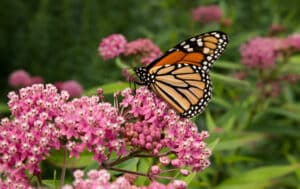
Rose Milkweed: Essential Native Plant for Monarch Butterflies
Rose milkweed is a beautiful native plant that can add color and life to your garden. This perennial flower, also known as Asclepias incarnata, grows
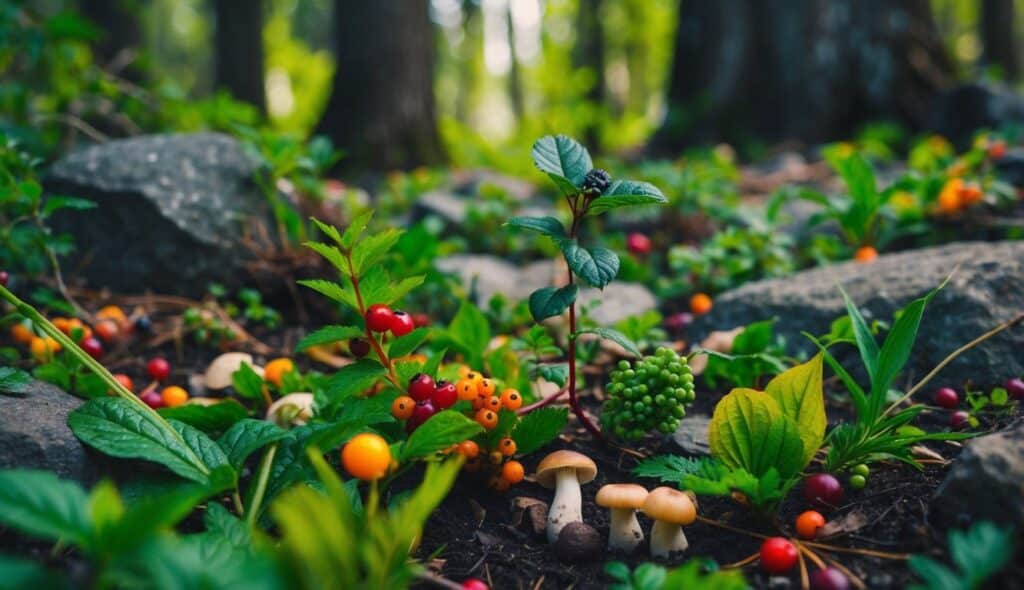
Many of us recognize the importance of growing local flora to help pollinators and promote biodiversity. But did you know that many of those native species are edible and nutritious, too?
In this guide, we’ll explore the world of edible native plants, share tips on how to grow them, and show you how they can add variety to both your garden and your plate.
Native plants offer a tasty and sustainable food source right in your backyard.
Many common wildflowers, shrubs, and trees produce edible parts that you can enjoy.
Learning to identify and use edible native plants can expand your diet with fresh, local foods.
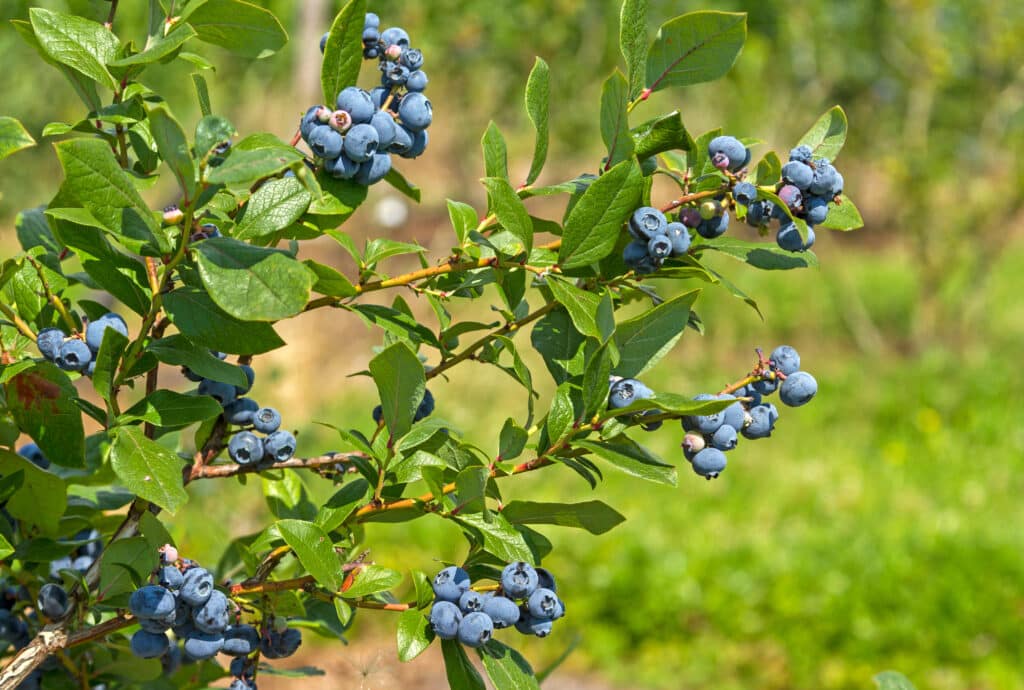
Foraging for wild edibles connects you to nature and local ecosystems.
It also provides nutritious foods without the environmental costs of conventional farming.
Native edibles often have unique flavors and textures not found in grocery stores.
You can even grow native edibles in your own garden.
This lets you enjoy fresh produce while supporting local wildlife.
Start small by planting a few native berry bushes or fruit trees.
Soon you’ll have a yard full of tasty, low-maintenance food plants.
Native plants offer both food and beauty. Learning to spot them helps you enjoy nature’s bounty safely.
Edible native plants are species that have evolved in a specific region without human introduction—and happen to be safe and delicious to consume
Because these plants are already adapted to local conditions, they typically require less water, fewer chemicals, and less overall maintenance. And that means they’re not just good for you, they’re also good for local ecosystems.
Native plants grow naturally in a region without human help. They’ve lived there for thousands of years.
These plants fit perfectly with local weather and soil.
You can find native plants in forests, prairies, and wetlands. They also grow in parks and gardens.
Native plants have special ties to local animals and insects.
Native plants feed and shelter many animals. Bees and butterflies love their flowers. Birds eat their seeds and fruits.
These plants offer food all year round. In spring, new leaves feed caterpillars. Summer flowers give nectar to hummingbirds. Fall berries help birds stock up for winter.
Native plants also make great homes. Birds build nests in their branches. Bees rest in hollow stems.
To spot edible native plants, look for certain features.
Leaves can be a big clue. Some have smooth edges, while others are jagged.
Flowers come in many shapes and colors. They might grow in clusters or stand alone.
Berries can be red, blue, or even white.
Some plants have unique bark or stems. Others might have a special smell when you rub the leaves.
Always check a plant’s scientific name to be sure. This helps you avoid look-alikes that might not be safe to eat.
Growing edible native plants in your garden or yard means less reliance on synthetic fertilizers and pesticides, because native species thrive in the soils and climates they’ve called home for centuries.
In turn, they attract and sustain beneficial pollinators, like bees and butterflies, and help preserve biodiversity. But more importantly, they make it easy for you to enjoy truly local flavors—right from your own backyard.
Native edible plants often thrive in soil similar to their natural habitats.
You should test your soil pH and adjust it if needed.
Most native plants prefer slightly acidic to neutral soil (pH 6.0-7.0).
Add organic matter like compost to improve soil structure and fertility.
This helps with drainage in heavy clay soils and water retention in sandy soils.
For plants that grow in poor soils, avoid over-fertilizing. Too much nutrients can lead to weak growth and fewer fruits or flowers.
Many edible natives need full sun to produce well.
Place these plants where they get at least 6 hours of direct sunlight daily.
Some plants, like woodland natives, prefer partial shade. Plant these under tall trees or on the north side of buildings.
Observe your garden throughout the day to find the right spots for different light needs.
Native plants often need less water once established.
But they still need regular watering when young or during dry spells.
Water deeply and less often to encourage deep root growth. This makes plants more drought-resistant.
Use mulch around plants to keep soil moist and reduce water evaporation.
Some natives prefer dry conditions.
For these, ensure good drainage and avoid overwatering.
Check soil moisture before watering.
Stick your finger 1-2 inches into the soil. If it’s dry, it’s time to water.
Edible native plants offer different options throughout the year. The growing seasons and climate affect when you can find and enjoy these plants.
Spring brings many tasty native plants to life.
In April and May, you can find wild leeks (ramps) in forests across North America. Their garlicky flavor is great in soups and salads.
Fiddleheads from ostrich ferns pop up in damp areas. You can sauté these curled fronds as a veggie side dish.
Violets bloom in spring too. Their flowers add color to salads and can be candied for desserts.
Summer is prime time for native berries and fruits.
In June and July, you can pick wild blueberries in the Northeast and Pacific Northwest.
Blackberries ripen in many regions during summer. Their sweet-tart flavor is perfect for pies and jams.
Wild plums grow in thickets across North America. You can eat them fresh or make preserves.
Prickly pear cactus fruits turn red when ripe in hot climates like the Southwest.
Fall brings nuts and seeds from native plants.
You can gather acorns from oak trees to make flour.
Pine nuts from pinyon pines are ready in fall in the Southwest. They’re great in pesto or as a snack.
Wild rice grows in northern lakes and is harvested in early fall.
In winter, you can still find some edible plants.
Evergreen needles from pine and spruce make a vitamin C-rich tea.
Rose hips stay on bushes into winter in cold climates. They’re high in vitamin C and make a tangy jelly.
Native plants offer a variety of edible options. You can find tasty berries, fruits, and herbs growing wild in many areas.
Berry shrubs are common edible native plants. Blueberries grow in many regions and offer sweet, round fruits. You can find them in forests and fields.
Huckleberries are similar to blueberries but have a more tart flavor. They grow on small bushes in mountainous areas.
Serviceberries produce clusters of small, purple berries. You might see them along forest edges or in open woodlands.
Wild strawberries are tiny but packed with flavor. Look for their low-growing leaves and white flowers in sunny spots.
Native trees can provide larger fruits.
Persimmons grow on medium-sized trees and ripen in fall. Their orange fruits are very sweet when soft.
Pawpaws produce large, custard-like fruits. You’ll find these trees in shady forests of eastern North America.
Chickasaw plums are small trees with tart fruits. They often grow in thickets along forest edges.
Pecans and hickory nuts come from tall trees. You can gather their nuts from the ground in autumn.
Herbaceous plants are non-woody and often have edible leaves or roots.
Jerusalem artichokes grow tall with yellow flowers. You can eat their crunchy tubers raw or cooked.
Wild greens like dandelions and chickweed are common in lawns and fields. Their leaves are nutritious and can be eaten raw in salads.
Ramps, or wild leeks, grow in shady forest areas. You can use both their leaves and bulbs in cooking.
Wild onions and garlic are found in many habitats. They add flavor to dishes and are easy to identify by their smell.
Native plants offer a variety of culinary, medicinal, and practical uses. You can turn them into tasty dishes, preserve them for later, or use them as natural remedies.
You can make many delicious foods from native plants.
Try adding wild berries to pies or jams. Use nuts in baked goods or as a crunchy snack. Make teas from leaves and flowers.
Foraged greens work well in salads or cooked dishes.
You can use wild herbs as spices in your cooking.
Some roots can be roasted or boiled as veggie sides.
Don’t forget about drinks! Turn fruits into fresh juices or ferment them into wines. Brew refreshing iced teas from flowers or leaves.
To enjoy native plants year-round, try these ways to preserve them:
You can also make syrups from fruits to use later. Infuse oils with herbs for cooking. Dry and grind leaves or roots into powder for easy storage.
Native plants have many uses beyond food.
You can make healing salves from some plants. Others work as natural bug repellents.
Some plants have fibers good for making rope or baskets.
Certain flowers make natural dyes for fabrics.
You can even use some as soap substitutes.
Always research plants carefully before using them as medicine.
Make sure you know how to identify and prepare them safely.
Native edible plants play a key role in supporting local wildlife. They provide food and shelter for many creatures, from tiny insects to birds and mammals.
Let’s explore how these plants can create thriving ecosystems in your garden.
Native flowers are perfect for attracting bees, butterflies, and other pollinators.
Plant species like purple coneflower, black-eyed susan, and wild bergamot. These flowers offer nectar and pollen throughout the growing season.
You can also add native herbs to your garden. Mint, thyme, and oregano are favorites of many insects.
These plants produce small flowers that are easy for bees to access.
Don’t forget about night pollinators! Evening primrose and moonflower vine bloom at night, attracting moths and bats.
Many native plants produce berries that birds love. Elderberry, serviceberry, and chokeberry bushes provide food and shelter for various bird species.
Sunflowers are another great option. Their seeds attract finches, chickadees, and nuthatches.
Leave the dried flower heads standing through fall and winter for continuous bird feeding.
Native grasses like little bluestem and switchgrass offer seeds for ground-feeding birds. They also provide nesting material in spring.
Native plants create diverse habitats for wildlife. Tall grasses and wildflowers offer cover for small animals and insects.
Dense shrubs provide nesting spots for birds.
Water is essential for wildlife. Consider adding a small pond or birdbath near your native plantings. This will attract a wider range of creatures to your garden.
Leave some areas of your yard “messy” with fallen leaves and branches. These spots become homes for beneficial insects and small animals.
Native edible plants can make your garden both beautiful and useful. You can create a landscape that looks great and provides food.
Native edibles fit well in many garden styles. You can mix them with flowers or use them as focal points.
Try planting berry bushes along fences or walls. Put herbs in sunny spots near your kitchen. Use fruit trees as shade trees.
Rain gardens are perfect for water-loving edibles. Plant pickerelweed in wet areas. It has pretty purple flowers and edible seeds.
Visit a garden center to find native edibles for your area. They can help you pick plants that will grow well in your yard.
Groundcovers are low-growing plants that spread to cover soil. Many native edibles work great as groundcovers.
Wild strawberries make a tasty groundcover. They grow well in sunny or partly shady spots. Their white flowers and red berries look nice too.
For shady areas, try wild ginger. It has heart-shaped leaves and a spicy root you can eat.
Mint is another good choice. It spreads fast and smells great when you walk on it. Just be careful – it can take over if not kept in check.
Big native plants can give you food and shade.
Oak trees produce acorns, which you can grind into flour. They also support lots of wildlife.
Magnolia trees have big, pretty flowers. Some types have edible flower buds you can pickle.
Beautyberry is a tall shrub with purple berries. The berries are edible but very tart. Birds love them too.
Pawpaw trees grow fruit that tastes like banana custard. They do well in partly shady spots.
These tall plants can form the backdrop of your edible landscape. Put shorter plants in front of them to create layers in your garden.

Foraging for edible native plants can be rewarding, but it’s crucial to do so responsibly. By following proper practices, you can enjoy wild foods while protecting plant populations and ecosystems.
When foraging, take only what you need. Harvest no more than 10% of a plant population in an area.
This helps ensure the plants can regrow and reproduce. Use clean, sharp tools to cut plants instead of pulling them up by the roots. Leave some flowers and seeds behind so the plants can spread.
Rotate your foraging spots to avoid putting too much pressure on one area.
Learn to identify plants accurately to avoid harming rare or protected species. Take classes or use field guides to build your knowledge.
Check local laws before foraging. Many public lands have rules about collecting plants.
Some areas may require permits or have limits on how much you can take. Certain plants may be protected by law.
Don’t forage on private property without permission. This can be trespassing.
Be aware of any pesticides or pollutants that might be present where you’re foraging. Stick to clean areas away from roads and industrial sites.
You can help protect native plants while enjoying them. Join local conservation groups or attend native plant society meetings. These groups often need volunteers for habitat restoration projects.
Report any rare plant sightings to conservation organizations. This data helps track and protect vulnerable species.
Consider growing native edible plants in your garden. This reduces pressure on wild populations and provides food for local wildlife.
Educate others about responsible foraging. Share your knowledge of plant identification and sustainable practices with friends and family.
Fact: Some native plants can be poisonous. Always research and confirm identification before consuming any wild plants.
Fact: Many native species are actually simpler to cultivate because they’re adapted to local conditions.
Fact: Plenty of edible native plants are just as flavorful as common garden varieties—sometimes even better.
For further research on edible native plants, you can consult your local university extension office or reputable resources like the USDA Plants Database to learn about native plants in your specific region.
You might also explore the North American Native Plant Society for additional tips on conservation and responsible growing.
Edible native plants offer a wide variety of options for foraging and cultivation. Many people are curious about finding and using these plants safely.
New England has many edible native plants. Blueberries grow wild in many areas. Cranberries are also native to the region. Fiddleheads from ostrich ferns are a springtime treat. Wild leeks, also called ramps, can be found in forests. Cattails have edible parts throughout the year.
Identifying safe wild plants takes care and knowledge. Use a reliable field guide with clear pictures. Look for key features like leaf shape, flowers, and growth pattern.
Never eat a plant you can’t identify with 100% certainty. It’s best to learn from an expert before foraging on your own.
Many North American flowers are edible. Violets add color to salads. Dandelions are common and versatile. Bee balm has a minty flavor. Wild roses have edible petals. Sunflowers produce edible seeds.
Always make sure flowers haven’t been sprayed with chemicals before eating them.
You can find lists of edible Massachusetts plants in several places. Local nature centers often have information. The New England Wild Flower Society is a good resource. University extension offices usually provide plant guides. Online databases like the USDA PLANTS Database can be helpful too.
Many nurseries sell edible native plants. Look for local garden centers that specialize in native species. Online retailers like Prairie Moon Nursery offer a wide selection. The New England Wild Flower Society has a native plant store.
Make sure to buy from reputable sources to get healthy, correctly identified plants.
Follow key guidelines when foraging.
Get permission before collecting on private land.
Don’t take more than you need. Leave plenty for wildlife and plant regrowth.
Avoid picking rare or endangered species.
Clean your tools between sites to prevent spreading diseases.
Learn and follow local regulations about foraging in public areas.

Rose milkweed is a beautiful native plant that can add color and life to your garden. This perennial flower, also known as Asclepias incarnata, grows
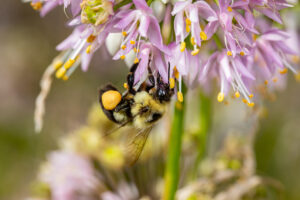
Nodding onion plant is a charming native plant found across North America. Its drooping pink or white flower clusters add a whimsical touch to gardens
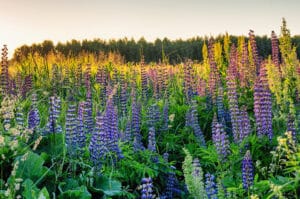
Lupinus perennis, known as wild lupine, is a stunning native wildflower of eastern North America. This perennial plant adds a splash of color to meadows
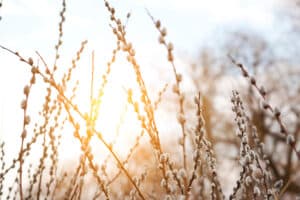
Pussy willows are a beloved sign of spring’s arrival. These fuzzy catkins appear on willow shrubs before their leaves emerge. Their soft, silvery buds resemble
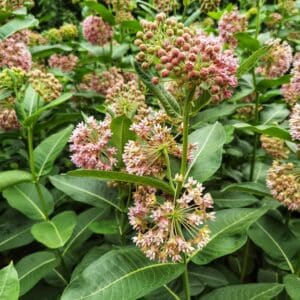
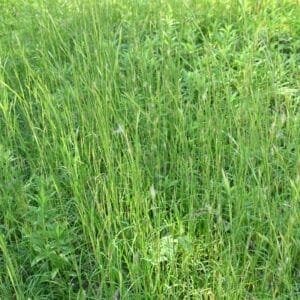
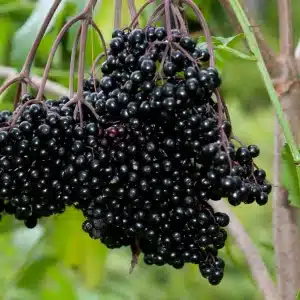
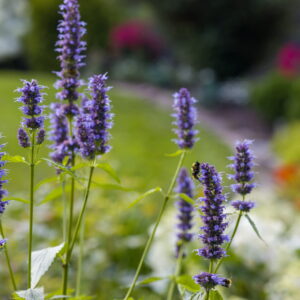
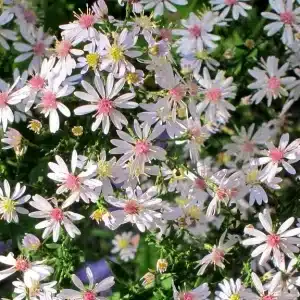
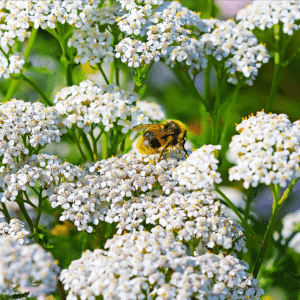
BUYING HIGH QUALITY PLANTS HAS NEVER BEEN EASIER
Our plants are easy to order, plant, and enjoy! Bringing pollinators to your property improves vegetable yields – Feed the bees!
Sign up for our email list!
Copyright © 2025 Bumbee’s | Web design and SEO by Searles Graphics